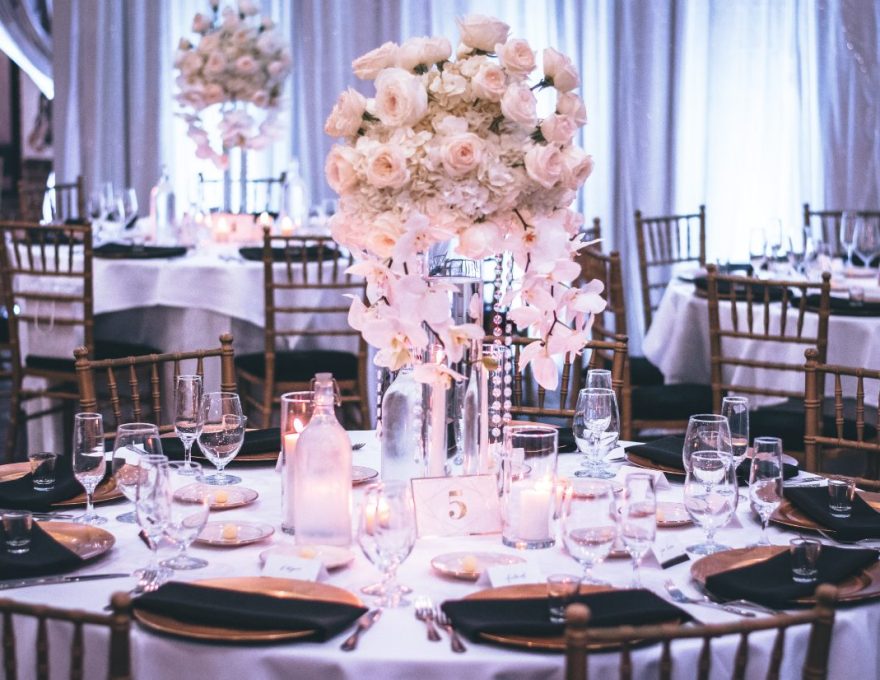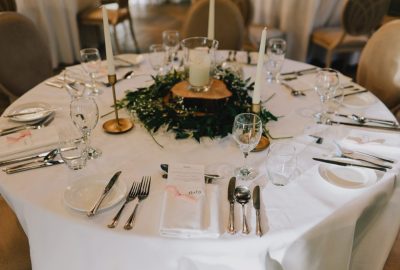Wedding reception seating is a task you’ll tackle closer to the Big Day. There are lots of factors to consider and guests to manage in the process. Before you can complete this task, you will need to receive RSVPs from guests (because how can you work out where they’re sitting if you don’t know who’s coming?) and you’ll need to familiarise yourself with the layout of the venue, as well as the shapes and sizes of the tables. Once you’ve got all of this information, you can plan your wedding reception seating! Here’s our guide for how to do it…
Assigned seating or open seating?
There’s no one way to go about doing it, so you’ve got to choose what works for you! Here’s a summary of your two options (plus a third compromise you may not have considered):
- Assigned seating is where you choose where each guest sits. It’s time consuming for you, but it’s easier for guests when they walk into the venue and it’ll save them time on the day.
- Open seating is where guests walk in and choose their own seats. It’s less work for you but it does present possible awkward situations on the day, with families and couples being split up or guests dragging their chair to another table.
- Compromise by allocating tables and allowing guests to choose which seat they’d like.
Read more: Open Seating or Assigned Seating
Who sits where?
- The head table is for you and your Other Half as well as your VIPs. This could be just you two, or you could invite your parents, siblings or wedding party to sit with you. More on this here!
- A family table is an alternative for couples who don’t wish to include their family in the head table. In the case of divorced parents, multiple family tables are an option, with each parent hosting their own table.
- Mix and match tables are where you will assign seats for the rest of your guests. Seat guests together based on what they have in common. For example, a table for your work friends, another table for uni friends and so on. For those that don’t know many people, seat them with other guests they’ll have fun with. In the case of a large group of friends taking up more space than one table, just split them down the middle.
- The singles table is one to avoid. Nobody enjoys being grouped together by their lack of having a partner.
- A kids table is perfect for older, more independent children, but younger children should be seated with their parents. More on this here!



